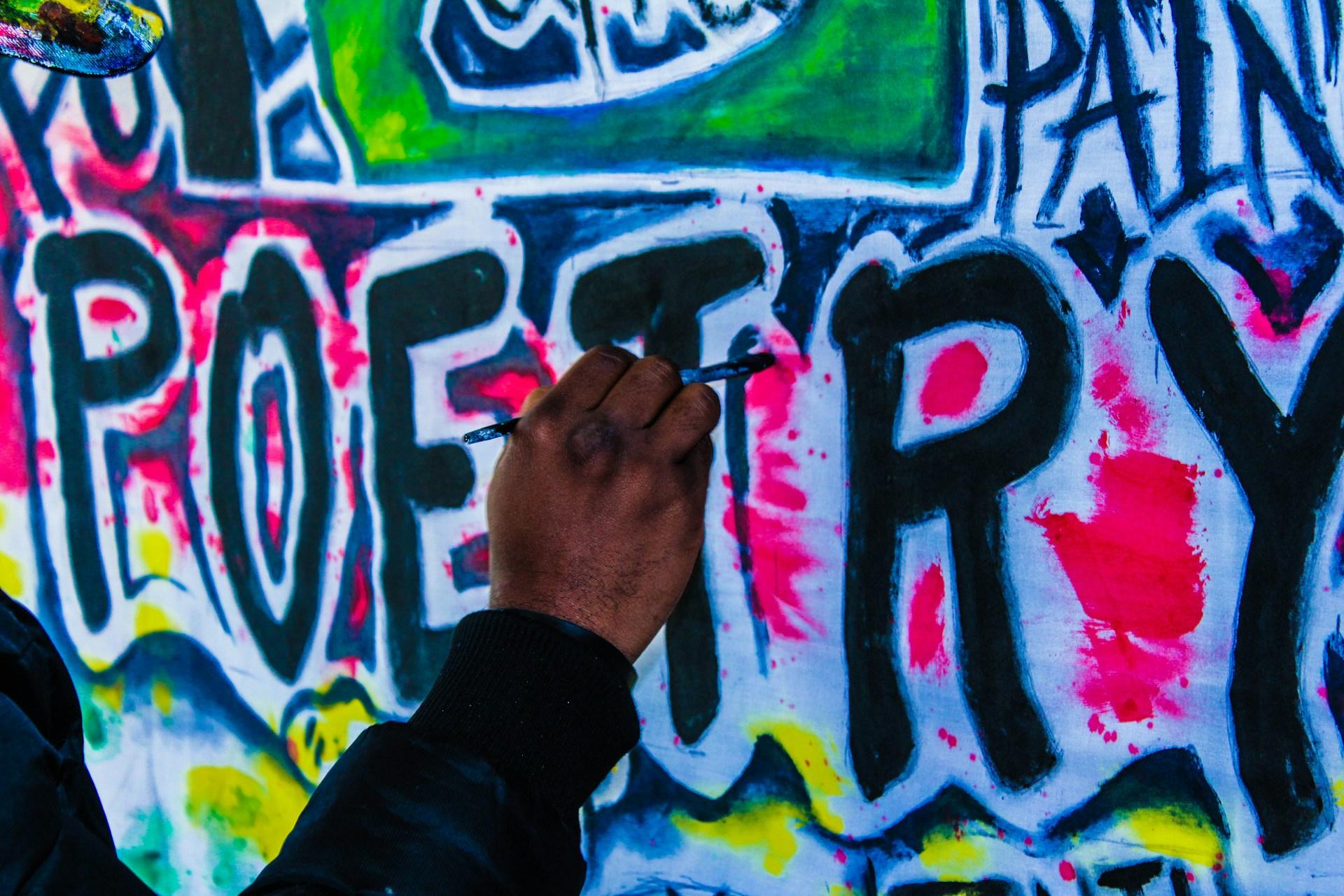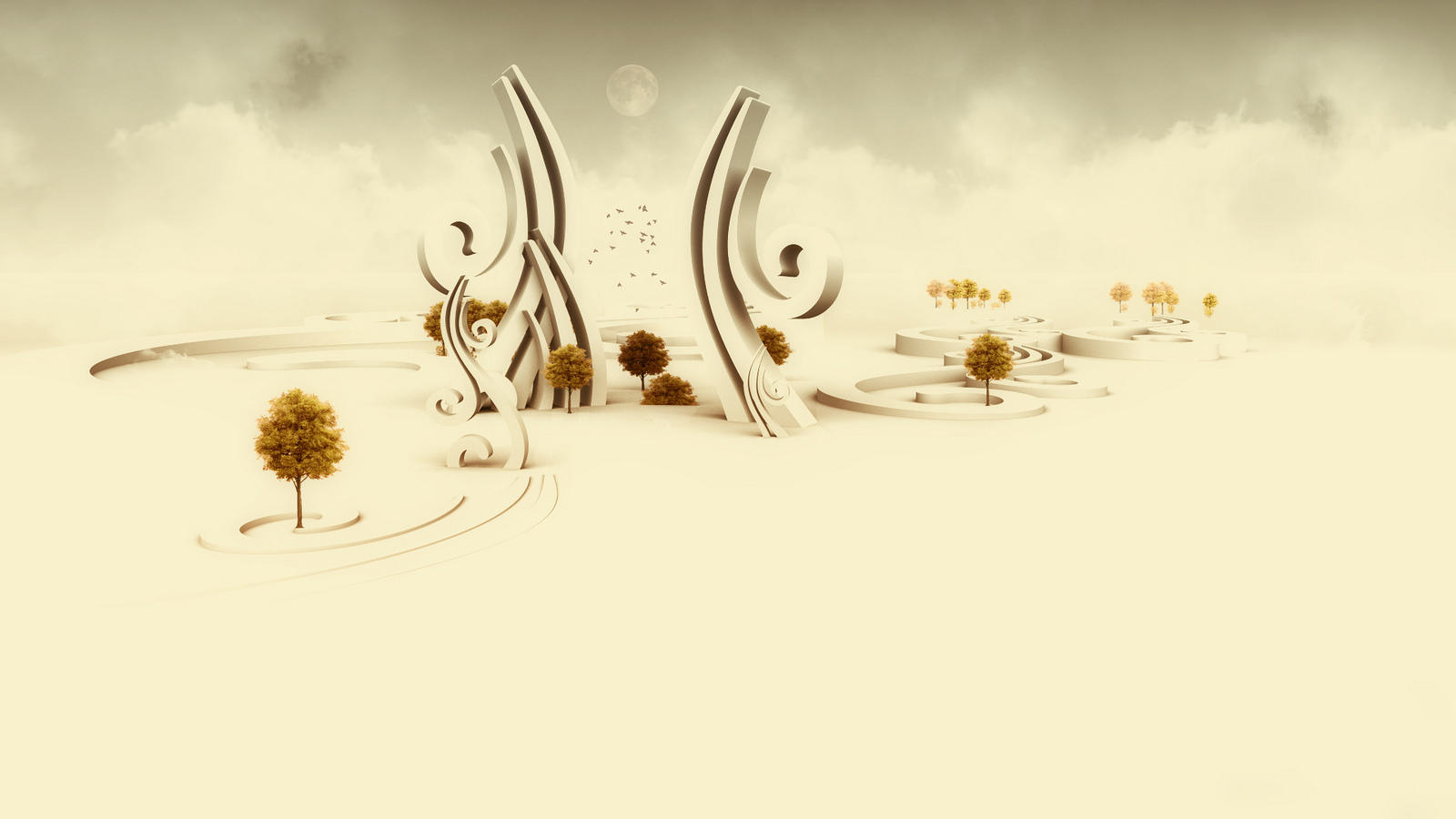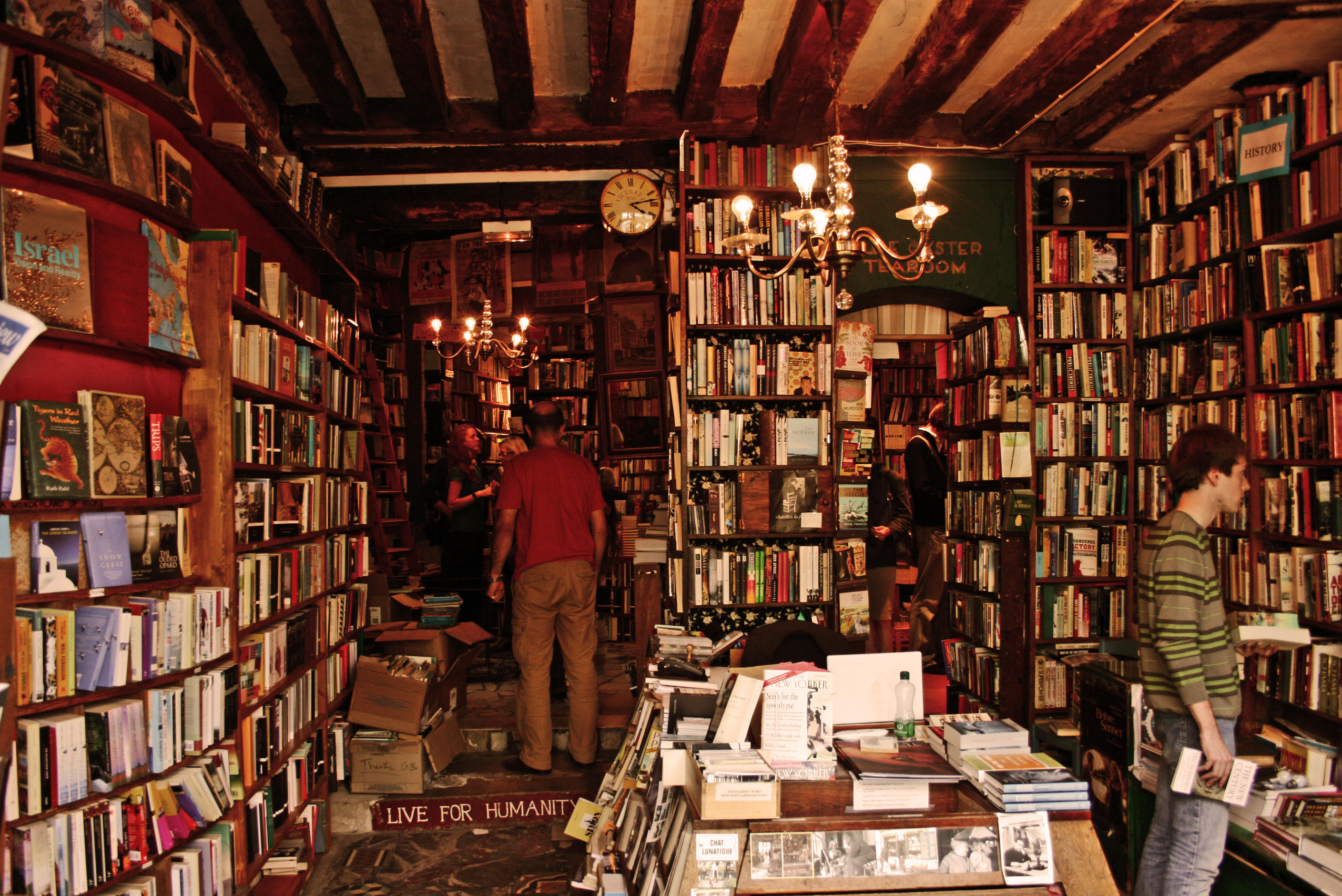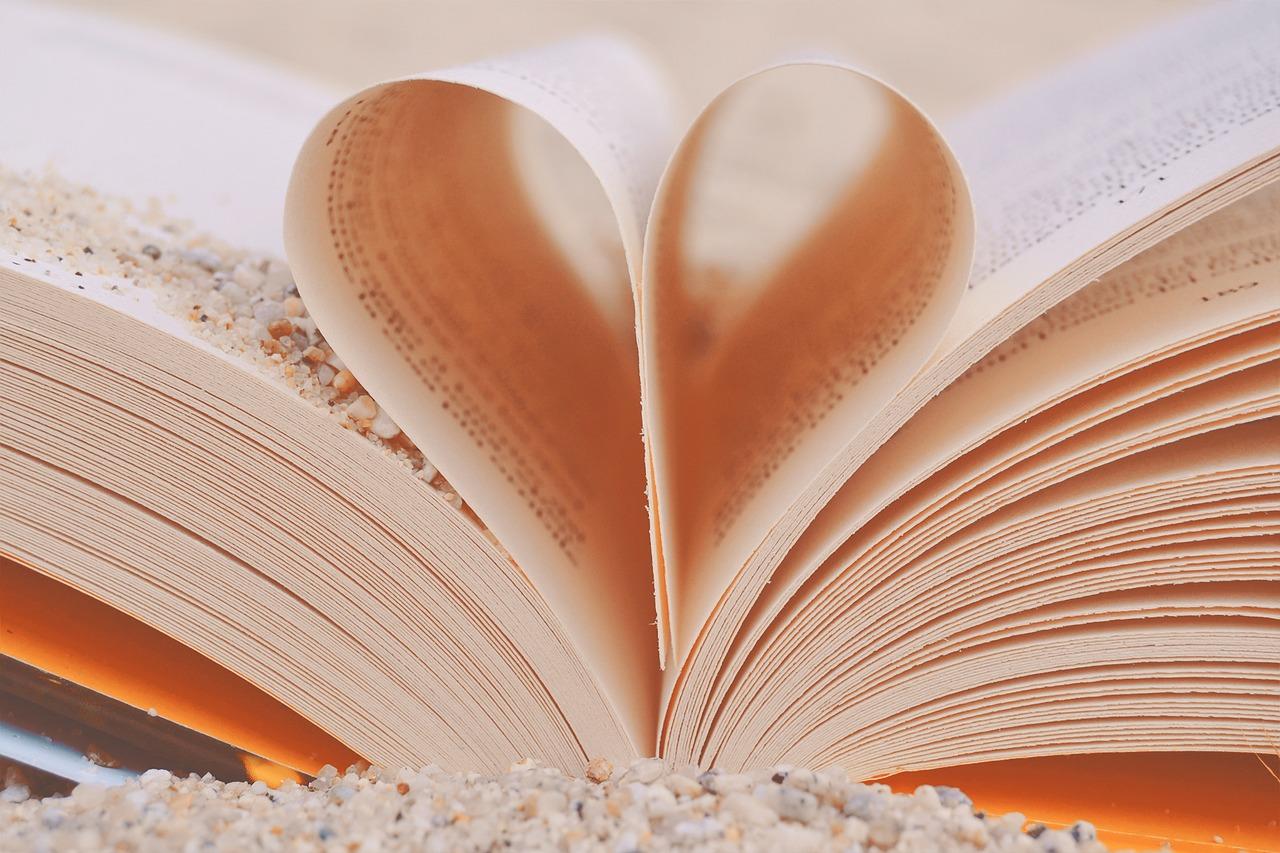There are arguably as many different types of poetry as there are poets, but we can classify poetry based on certain hallmarks, recurring themes, trends, and styles. While the boundaries between different types of poetry tend to blur at the edges, we will discuss the basics.
From Shakespeare to Milton, from Homer to feminist slam poetry, let's examine the different poetic forms, some examples, and the writing styles that poets have used over the centuries.

Acrostic Poems
Acrostic poems are poems where the first letter of the first word on each line spells out a word or message.
For years, these poems have been used to either create a hidden message within the poetry or theme the poem around a word or expression that's spelled using these letters.
Acrostic poems are free to follow different meters and rhyme schemes if needed, but they can also be written like free verse poems.
Their simple structure has made them very popular writing exercises for children in primary schools.
Ballad
Much like in music, the word “ballad” can also refer to a type of poetry. A typical ballad is a narrative poem that uses short stanzas to tell a story.
They were typically performed to music, so the word is still used for certain types of songs, whether or not the lyrics are
ballads. A ballad's stanzas are usually four lines (or quatrains) long and use iambic meter, which feels and sounds quite musical.
A Western Ballad by Allen Ginsberg is a good example.
Elegy
Elegies are mournful or reflective poems typically written in response to the death of a person. However, they can also be written to reflect on other sad themes.
An elegy can follow different poetic forms, but its tone is often sombre, and its meter and rhyme are relatively standard.
It's common for elegiac poems to be seen across many cultures as a way to express grief.

Epic Poems
An Epic poem is epic in the sense of its lengthy narrative form rather than describing its quality. Epic poems usually tell stories of heroes and their achievements. These poems are written using complex verse structures and narrative arcs.
Expect many forces of nature and themes like action, disaster, and triumph in epic poetry.
The most famous examples of epic poems are likely The Iliad, The Odyssey, and Paradise Lost. Here's a passage taken from Milton's Paradise Lost:
“OF Mans First Disobedience, and the Fruit
Of that Forbidden Tree, whose mortal taste
Brought Death into the World, and all our woe,
With loss of Eden, till one greater Man
Restore us, and regain the blissful Seat,
Sing Heav'nly Muse, that on the secret top
Of Oreb, or of Sinai, didst inspire
That Shepherd, who first taught the chosen Seed,
In the Beginning how the Heav'ns and Earth
Rose out of Chaos: or if Sion Hill
Delight thee more, and Siloa's brook that flowed
Fast by the Oracle of God; I thence
Invoke thy aid to my adventurous Song,
That with no middle flight intends to soar
Above the Aonian Mount, while it pursues
Things unattempted yet in Prose or Rhime.
And chiefly Thou, O Spirit, that dost prefer
Before all Temples th' upright heart and pure,
Instruct me, for Thou knowest; Thou from the first
Wast present, and with mighty wings outspread
Dove-like sat brooding on the vast Abyss
And mad'st it pregnant: What in me is dark
Illumin, what is low raise and support;
That to the highth of this great Argument
I may assert Eternal Providence,
And justifie the wayes of God to men.”
Free Verse Poetry
As the name suggests, free verse poetry has fewer structural constraints. In fact, poets can freely choose how they structure their poems, without needing a specific meter or rhyme scheme.
In free verse poetry, poets will use rhythms, sounds, and word choices to create whatever effect they like without concerning themselves with the structures common to other types of poetry.
That isn't to say that they have to avoid using any type of rhyme scheme, meter, or structure; they're just free to choose when to use them.

Haiku Poems
Haiku poems originated in Japan and are typically themed around nature or love.
A Haiku is three lines long with a syllable structure of 5-7-5. This means you have five syllables in the first and third lines and seven in the second line.
This creates a unique rhythm that traditional Japanese haiku poems are famous for. In Japanese, the structure is measured in sounds or “breaths”, but the English-language versions tend to use syllables so that the poem still has the same poetic effect.
“The Old Pond” by Matsuo Bashō
An old silent pond
A frog jumps into the pond—
Splash! Silence again.
Limericks
Let's examine one of the less serious types of poetry, which most people in the English-speaking world are familiar with.
A limerick is a light-hearted poem that's usually five lines long. These lines follow an AABBA rhyme scheme.
Limericks use accentual verse, which means the number of accents, not syllables, dictates how each line is written. They're somewhat flexible as a poetic form, and you can play around with the rhythm a bit.
Edward Lear was a poet famous for his limericks in the 19th century. Here's one such example, which is weirdly written as four lines, but reading it will reveal that it's actually five lines.
There was an Old Person of Dean,
Who dined on one pea and one bean;
For he said, "More than that would make me too fat,"
That cautious Old Person of Dean.
Can you hear where the third line becomes the fourth? It's after “that”.

Ode
The ode is a type of lyrical poetry that glorifies or praises something. Typically, poets use elaborate verse structures and language to express the person, place, thing, or idea they love.
There are plenty of examples of odes in poetry. We recommend looking to the odes of Keats and Shelley if you're interested.
Sonnets
A sonnet, 14 lines long, are named after the Italian word "sonetto". The word literally means "little song."
Sonnets are written in iambic pentameter, which means that they're read in a rhythm similar to a beating heart. They use a strict rhyme scheme and meter.

Expect deep emotions like love in sonnets, and the bard himself, Shakespeare, is famous for many of his reflective sonnets.
Here is Sonnet 3:
“Look in thy glass and tell the face thou viewest
Now is the time that face should form another;
Whose fresh repair if now thou not renewest,
Thou dost beguile the world, unbless some mother.
For where is she so fair whose uneared womb
Disdains the tillage of thy husbandry?
Or who is he so fond will be the tomb
Of his self-love, to stop posterity?
Thou art thy mother's glass and she in thee
Calls back the lovely April of her prime;
So thou through windows of thine age shalt see,
Despite of wrinkles, this thy golden time.
But if thou live, remembered not to be,
Die single and thine image dies with thee.”
Slam Poetry
Slam poetry is one of the newer kinds of poetic expression. Though you could argue that all poetry is supposed to be performed or at least read aloud, slam poetry is always performative.
Slam poetry is a competitive type of performative poetry. It emerged during the 20th century in various cities in the United States, favouring short and emotional poetic performances.
Slam poetry focuses on typically three-minute performances using rhythm, words, and emotions to engage audiences.
Poetry slams are often used as a vehicle to highlight contemporary social issues. Feminist slam poets like Dominique Christina and Crystal Valentine, for example, are making waves with their poetry tackling gender, race, and identity.

Villanelle
The villanelle is a poetic structure of 19 lines divided into five three-line stanzas (tercets) and a single four-line stanza (quatrain). It has a strict rhyme scheme and repeating lines.
Dylan Thomas' poem Do Not Go Gentle Into That Good Night exemplifies a Villanelle.
Learn More About Poetry with Superprof
If you'd like to learn more about poetry, why not study it with a private tutor?
With so many different types of poetry, it can help to work with a private tutor as they can focus on forms that you're interested in. A better understanding of all the types of poetry will help you become a better poet, too.
Many tutors on the Superprof website offer the first session for free, so you can always try a few before choosing the right one.
Search for the type of poetry you're interested in on the Superprof website today!




















